Although a F-102B was developed, it was renamed to the F-106 Delta Dart.
This is the story of the F-102A.
Fire Control First Aircraft
In 1948, senior officers of the U.S.A.F.
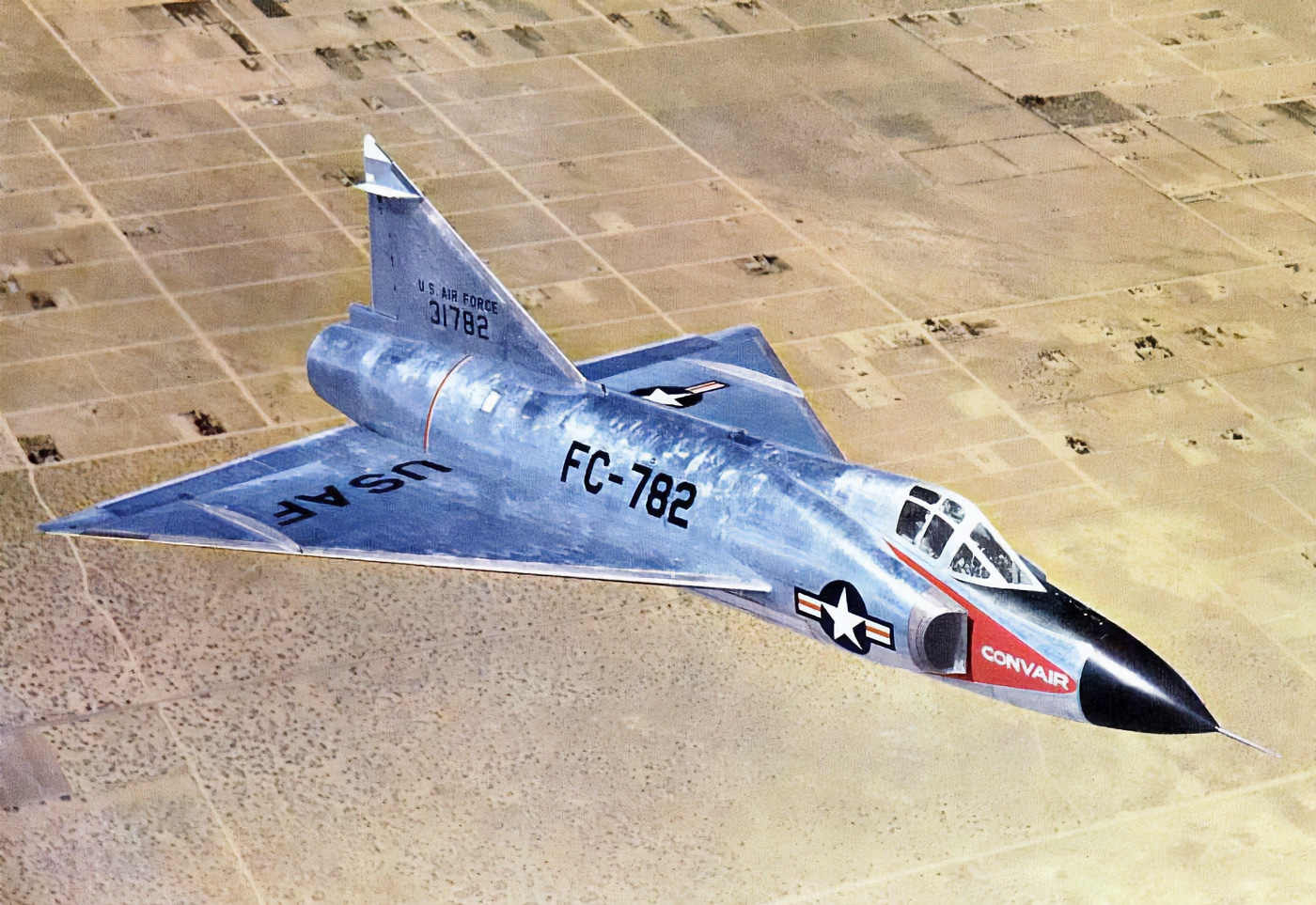
Shown here is a Convair YF-102 during the development phase for the plane that would become the F-102 Delta Dagger. Image: U.S. Air Force
recommended a competition to design a new interceptor to be in service by 1954.
By Oct 1950, Hughes Aircraft was selected to design the FCS.
The result was the MC-3, which located targets, steered intercept coordinates, and controlled weapons deployment.
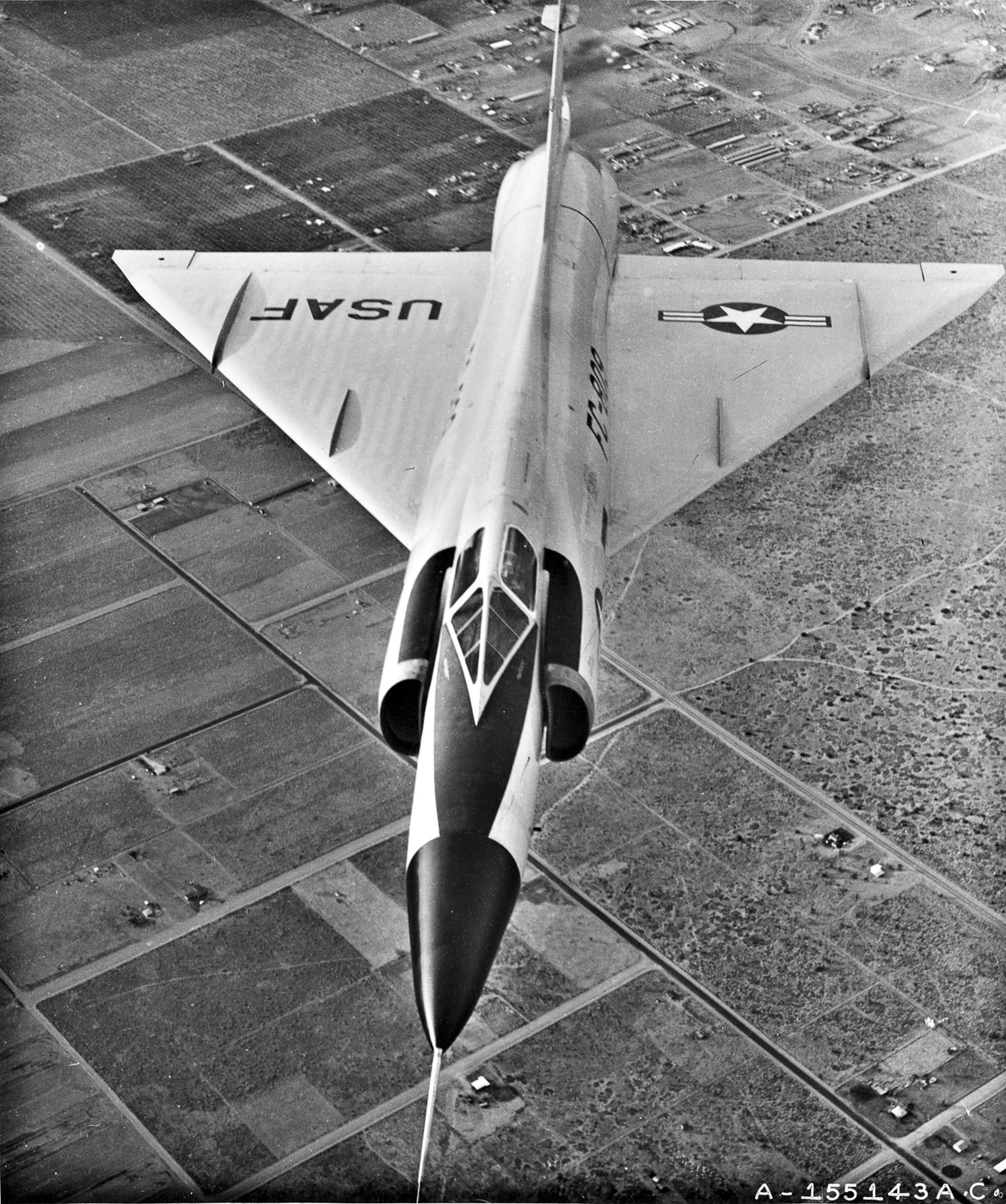
Shown here is an overhead view of a Convair F-102A Delta Dagger in flight. Image: U.S. Air Force
The F-102 Design
The F-102 was developed without a gun.
It had a three-section internal weapons bay instead of hardpoints/pylons for missile launchers.
Convair had already been researching Delta Wing aircraft and began work.
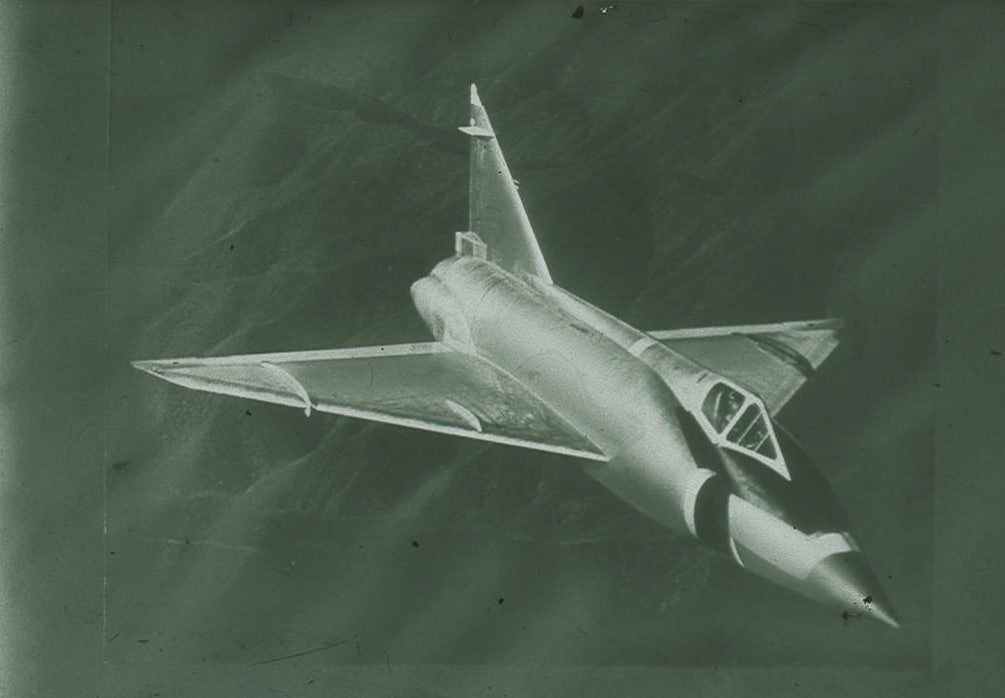
Initially called the Machete, the F-102 was renamed as the Delta Dagger. An early model is shown here in an airplane recognition slide produced by the United States Navy. Image: U.S. Navy
The Convair design was given the green light in November 1951.
In 1953, as the deadline approached, Convair had to address the problems with the original design.
In October 1953, the prototype took to the air, and its performance was less than spectacular.
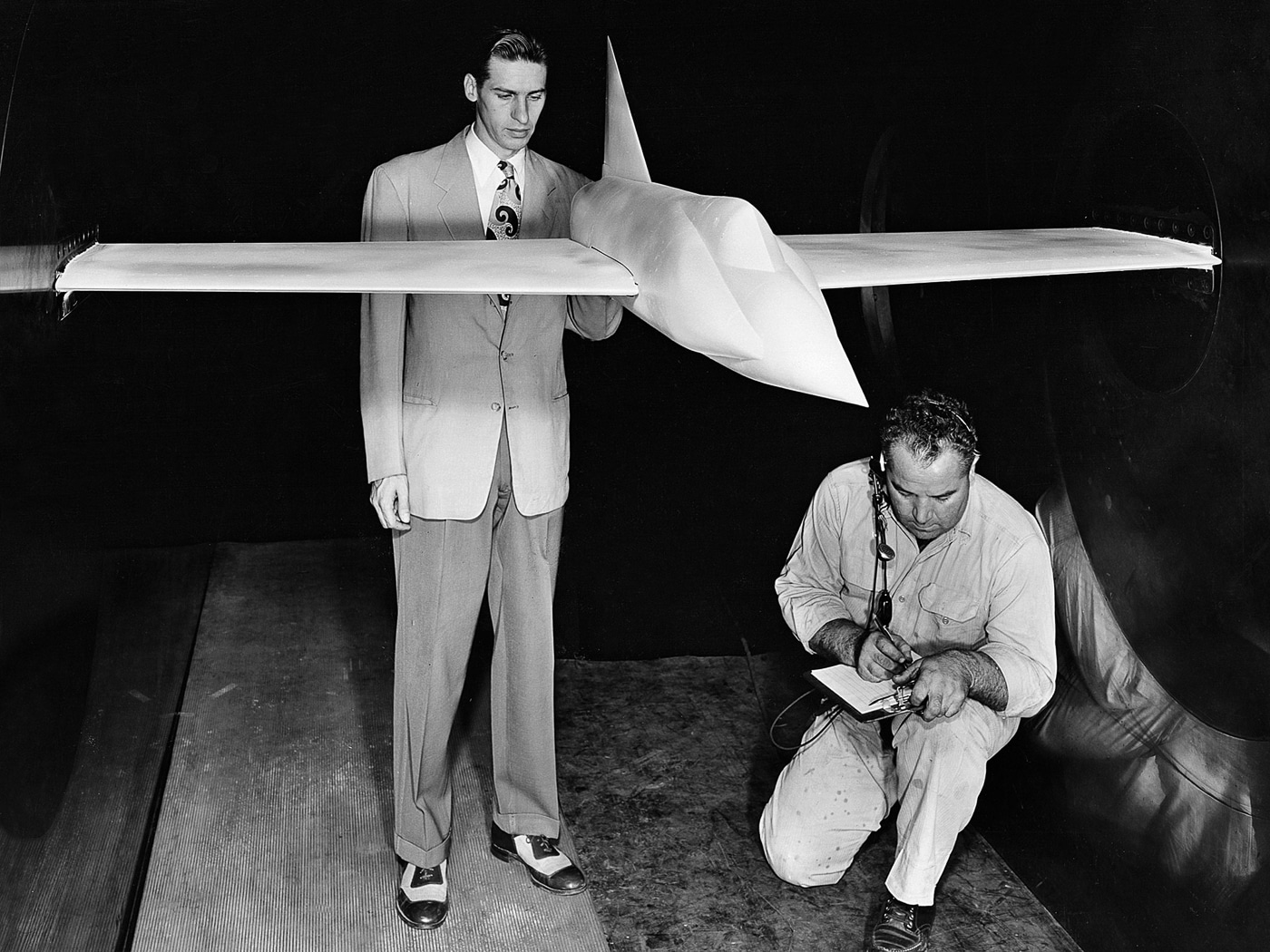
A .10-scale model of the XF-102 in a supersonic wind tunnel at the National Advisory Committee for Aeronautics (NACA), the forerunner of the National Aeronautics and Space Administration. Image: NASA
There was a three-month break until the next flight in January 1954.
The second flight proved the design had serious issues and could not achieve Mach 1.
Redesigned F-102A
Due to the poor performance, the original YF-102 required a massive redesign.
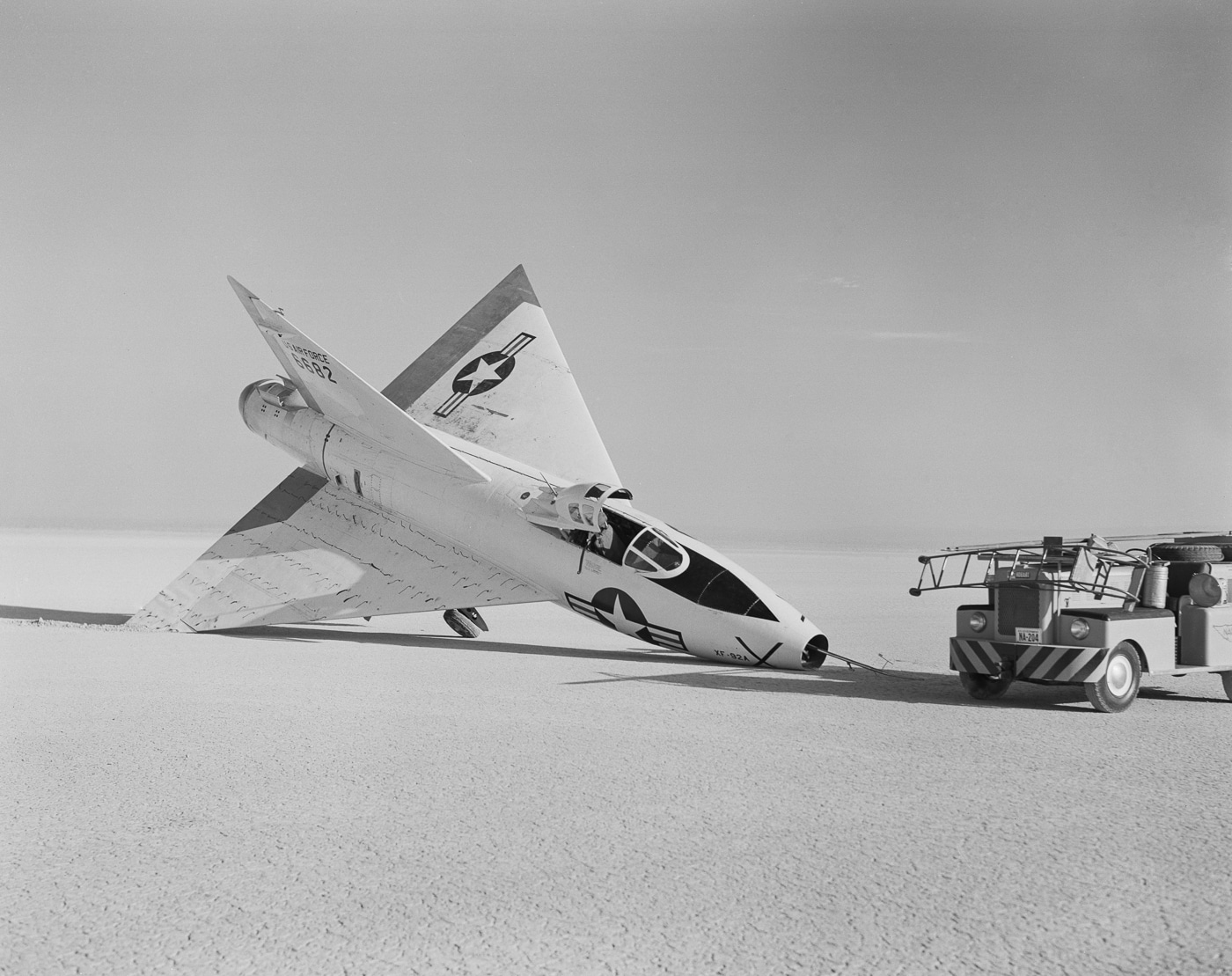
Shown here is the XF-92 after a landing mishap. The XF-92 was an experimental aircraft that directly led to the creation of the delta-winged F-102A. Image: NASA
Convair engineers had already been working on some changes since mid-1953, and now they would be implemented.
In December 1954, the first flight of the redesigned Delta Dagger proved the modifications worked.
In 1959, the F-102A broke the world speed record at Mach 1.56.
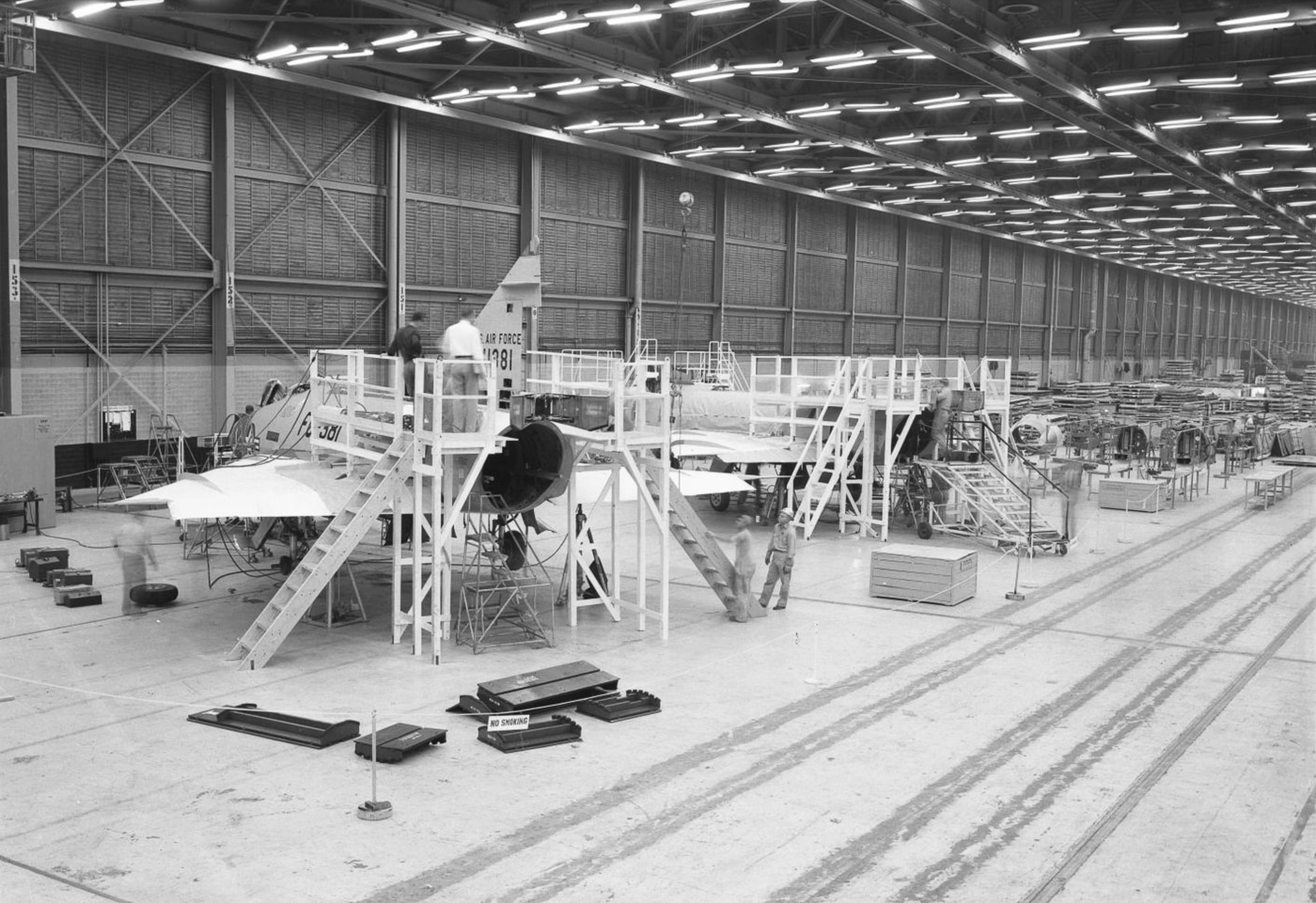
A Convair F-102 Delta Dagger production line is shown here, circa 1957. Image: University of North Texas
After all design issues were corrected, Convair produced 111 units.
Due to its side-by-side configuration, the TF-102 aka the Tub was limited to subsonic speed.
Two years later, the unit was redeployed from the California desert to Thule AB, Greenland.

A F-102 Delta Dagger aircraft assigned to the 119th Fighter Wing ”Happy Hooligans”, 178th Fighter Squadron, North Dakota Air National Guard, at Hector International Field. Image: U.S. Air Force
In 1962, F-102s were transferred to Vietnam and provided escorts for EB-66 andB-52 bomberArc Light sorties.
The two-seat TF-102 was sometimes tasked with forward air control duties.
Lomax was the flight leader, with Lt. Wallace Wiggins as wingman.
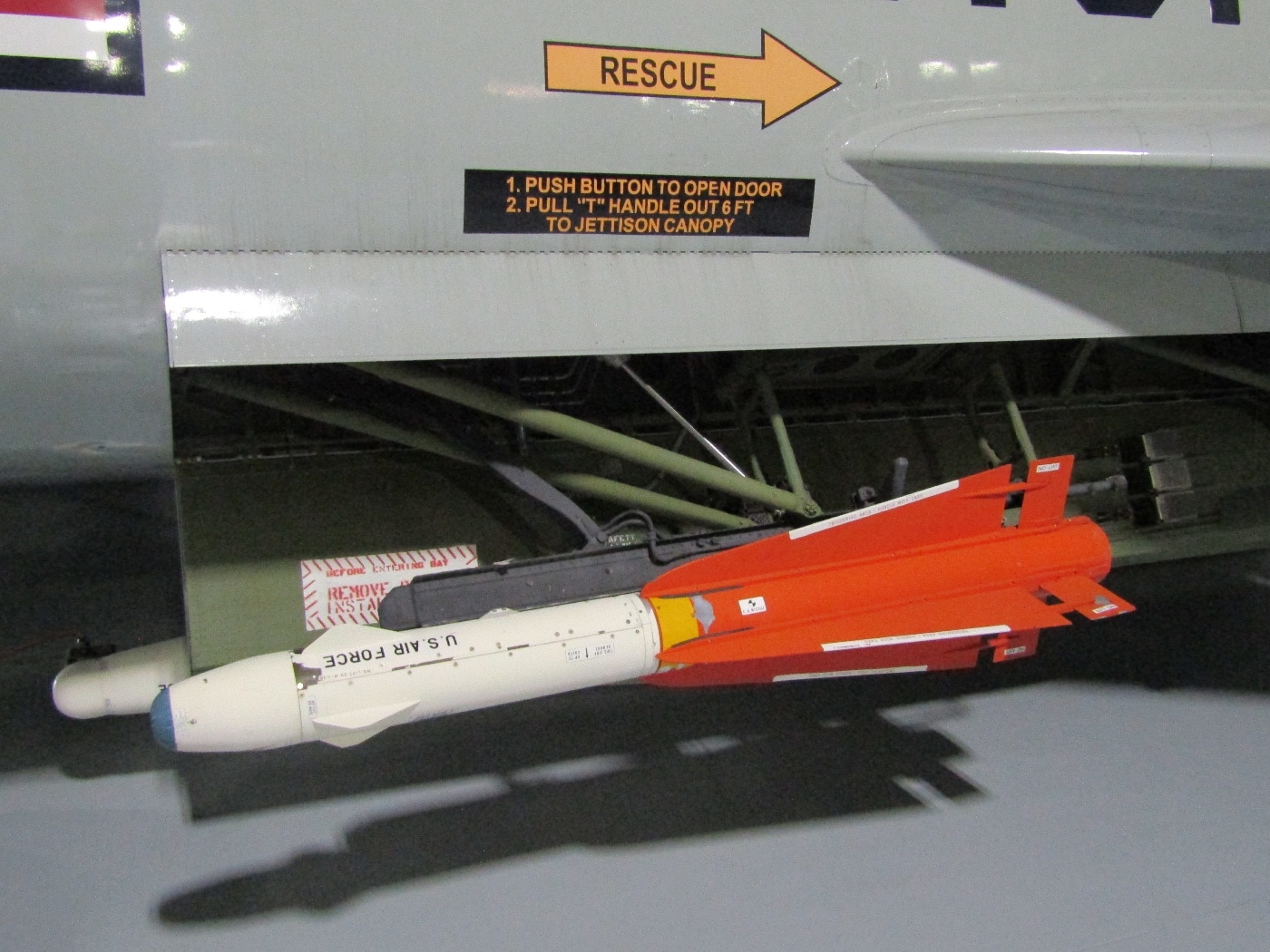
The Hughes AIM-4 Falcon was the first guided air-to-air missile used by the U.S. Air Force. Designed for use against slow-moving bombers, it was virtually ineffective against agile fighters. Image: Author
North Vietnamese radar picked up the formation and launched two Mikoyan-Gurevich MiG-21s from Noi Bai air base.
As the MiGs came into range, Lomax fired three Falcon missiles, which all missed their target.
Ngan fired again, and the second missile struck Wigginss aircraft and lodged in the fuselage.
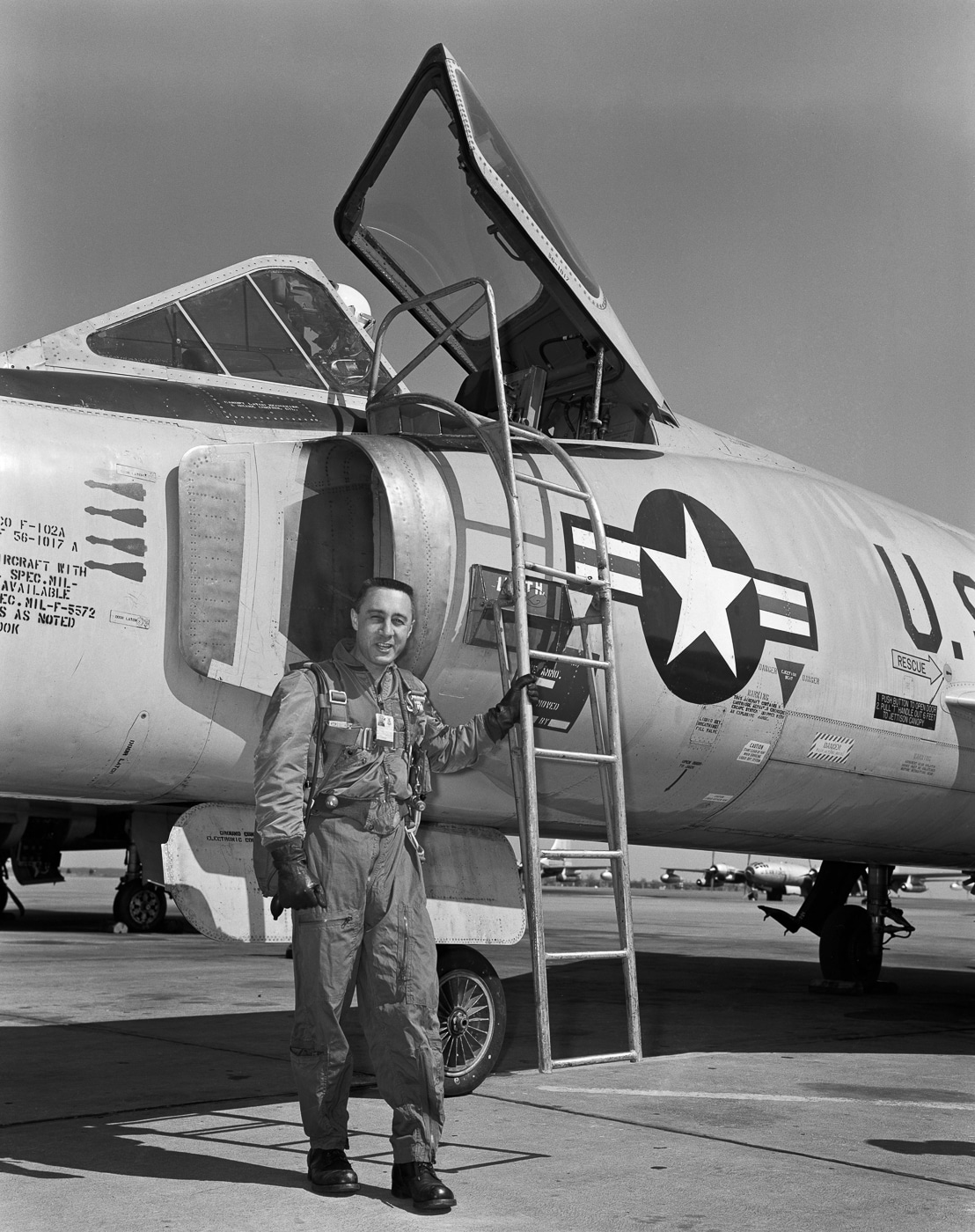
Astronaut Gus Grissom with his F-102 Delta Dagger on the flight line. The second American to fly in space, Grissom died in a fire during a launch rehearsal for the Apollo 1 mission. Image: NASA
As Wiggins called out to Lomax, the missile exploded, destroying the aircraft.
Their performance is unknown as both countries claimed two air-to-air kills against each other and denied losing any aircraft.
The aircraft retired from service in 1979.
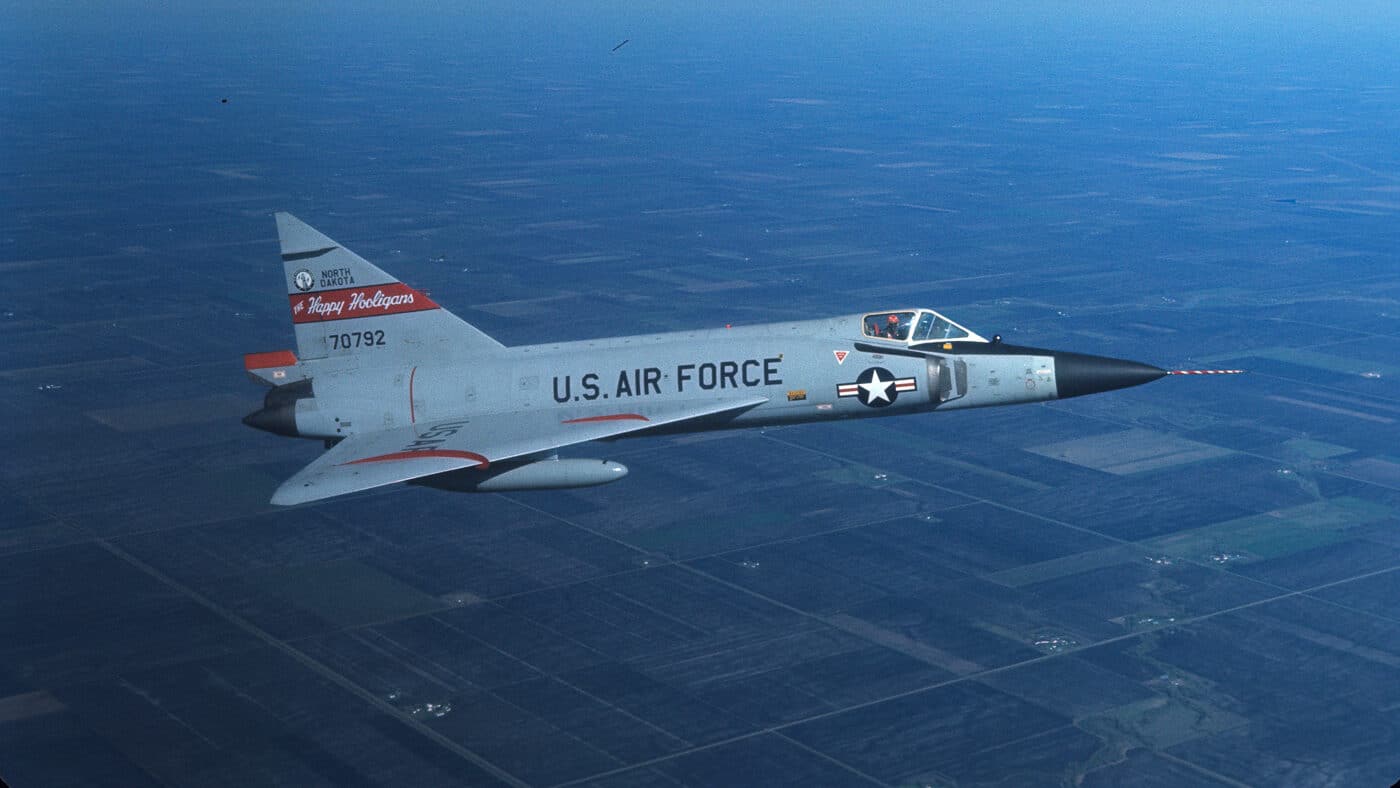
A North Dakota Air National Guard 178th Fighter Squadron F-102 Delta Dagger aircraft flies over North Dakota. The 178th FS flew the F-102 from 1966 through 1969. Image: U.S. Air Force
The surviving aircraft are located throughout the U.S., Canada, and Europe as gate guards or in museums.
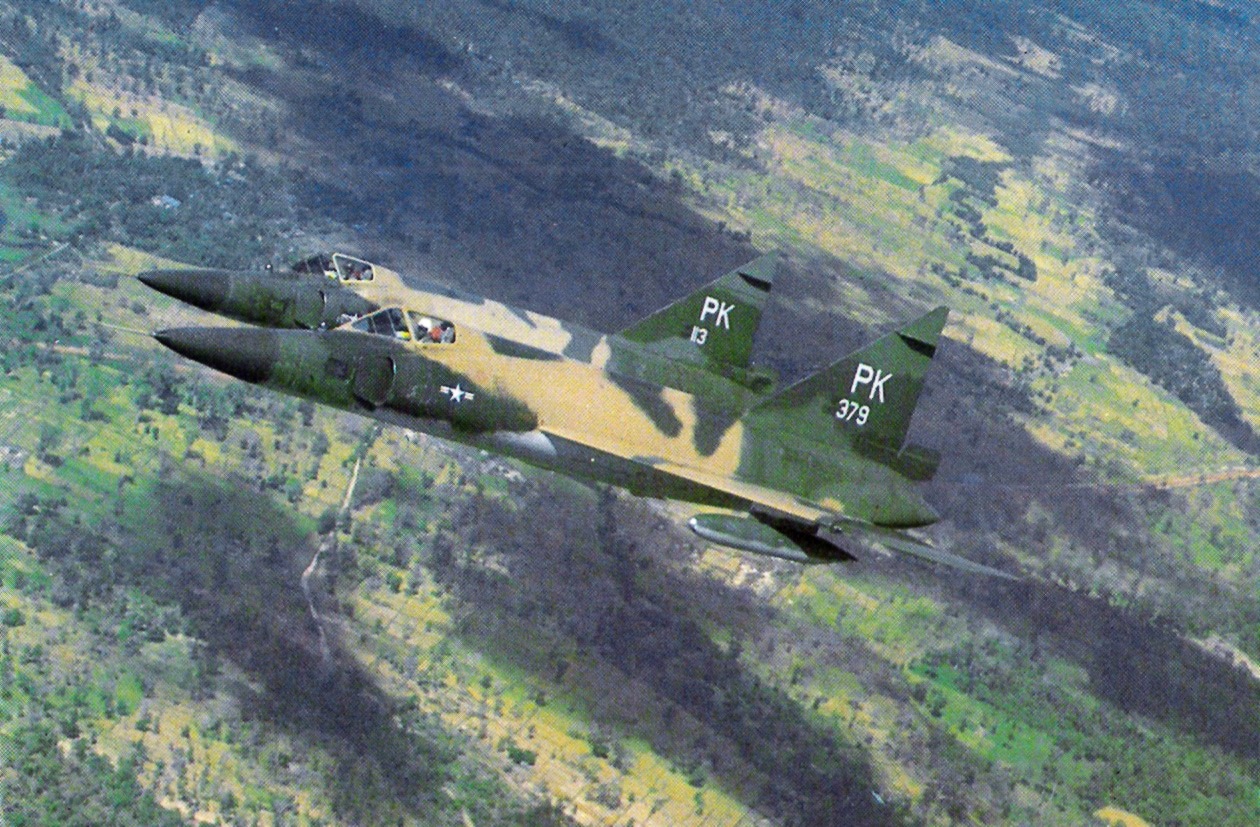
Two Convair F-102A Delta Dagger interceptors of the 509th Fighter Interceptor Squadron over Vietnam in November 1966. Image: U.S. Air Force
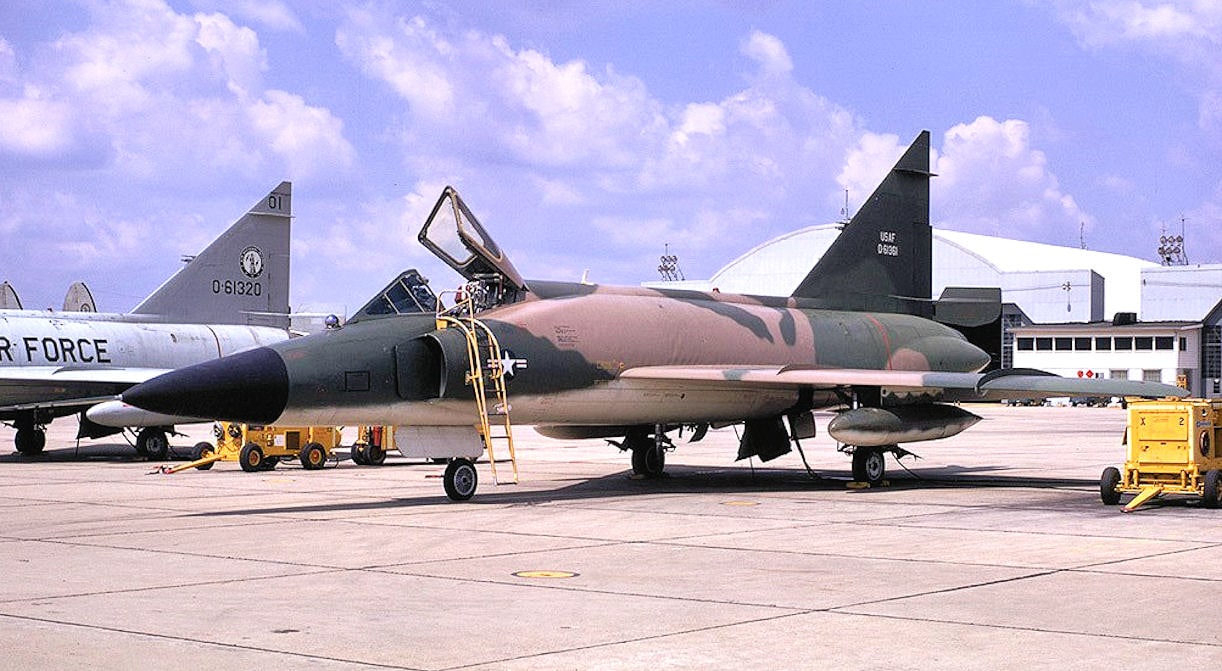
A F-102A Delta Dagger of the 146th Fighter-Interceptor Squadron sits on the tarmac. It wears the Vietnam War-era camouflage pattern. Image: U.S. Air Force
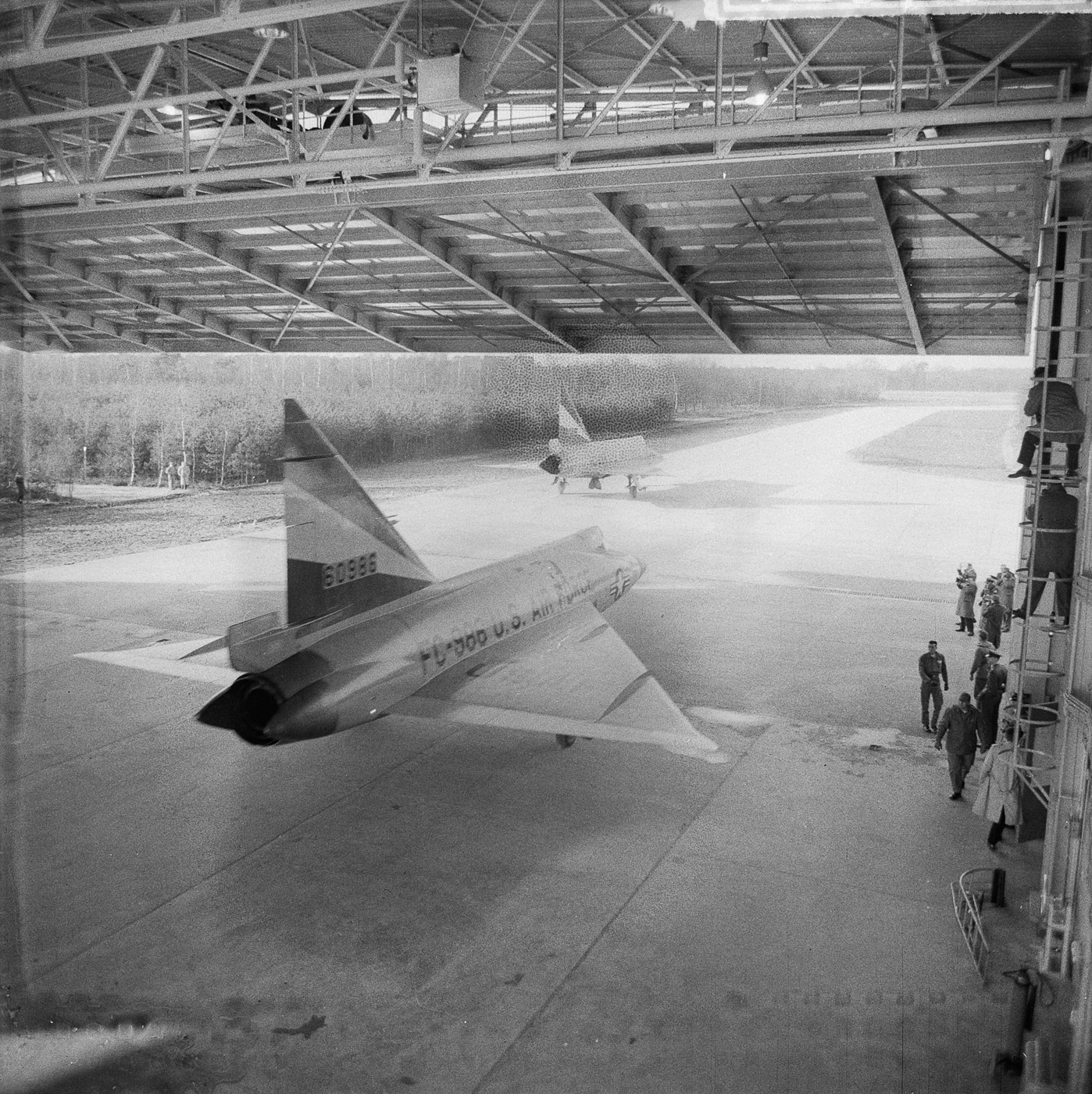
A pair of F-102A Delta Daggers of the 32nd Fighter-Interceptor Squadron taxi from a hangar. Based in Soesterberg, Netherlands, the aircraft arrived at the airbase in February 1961. Image: Nationaal Archief




